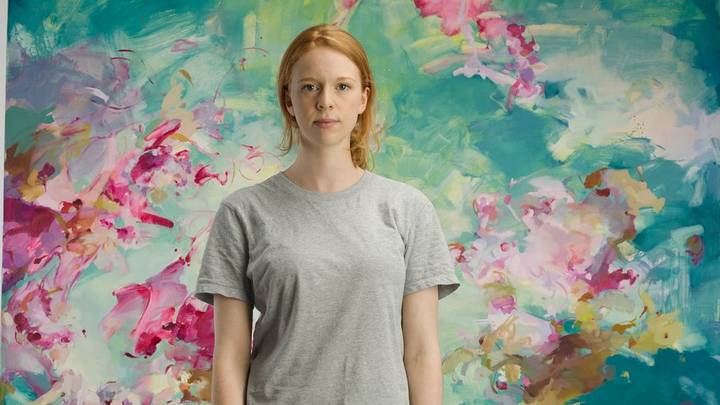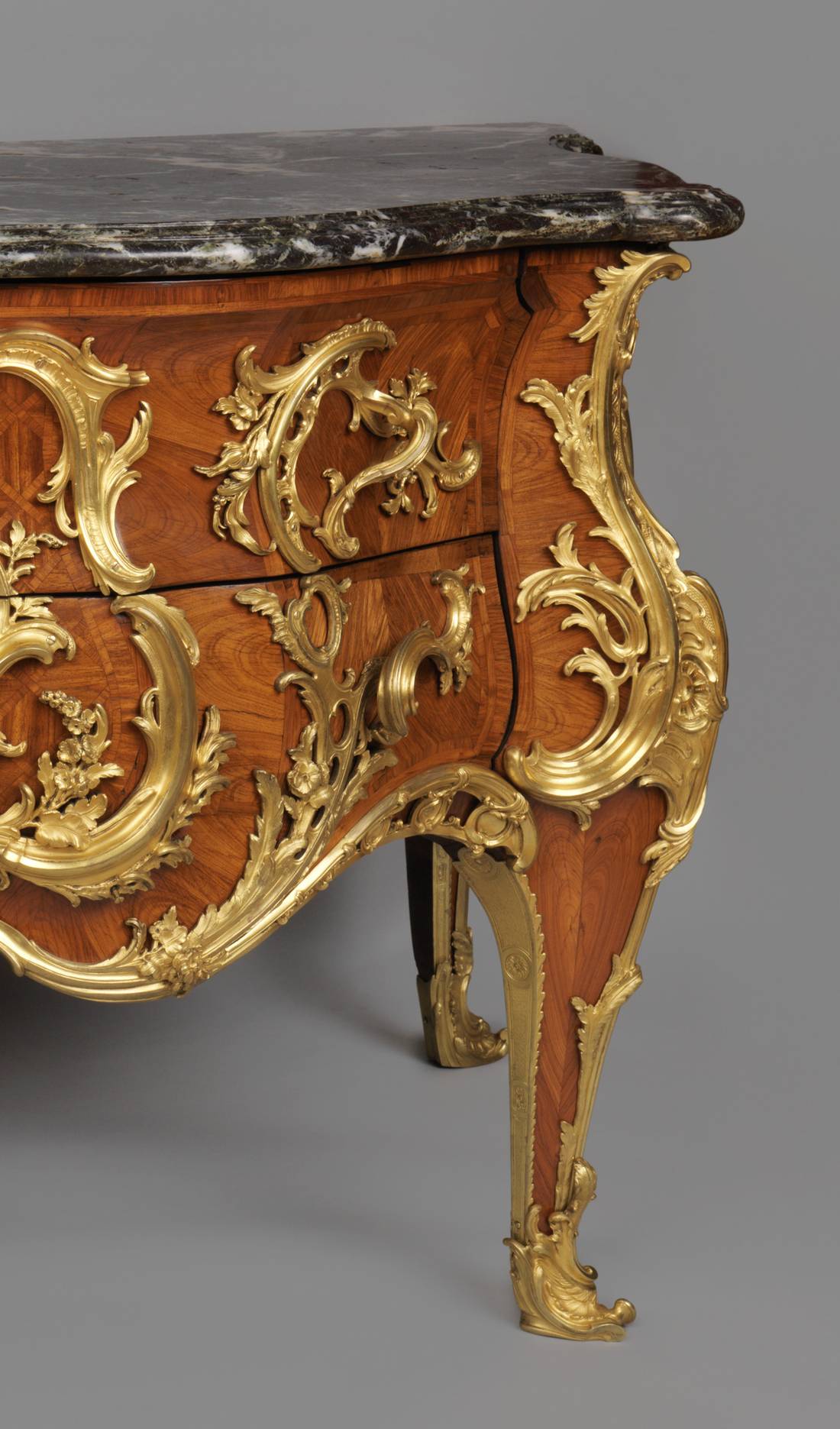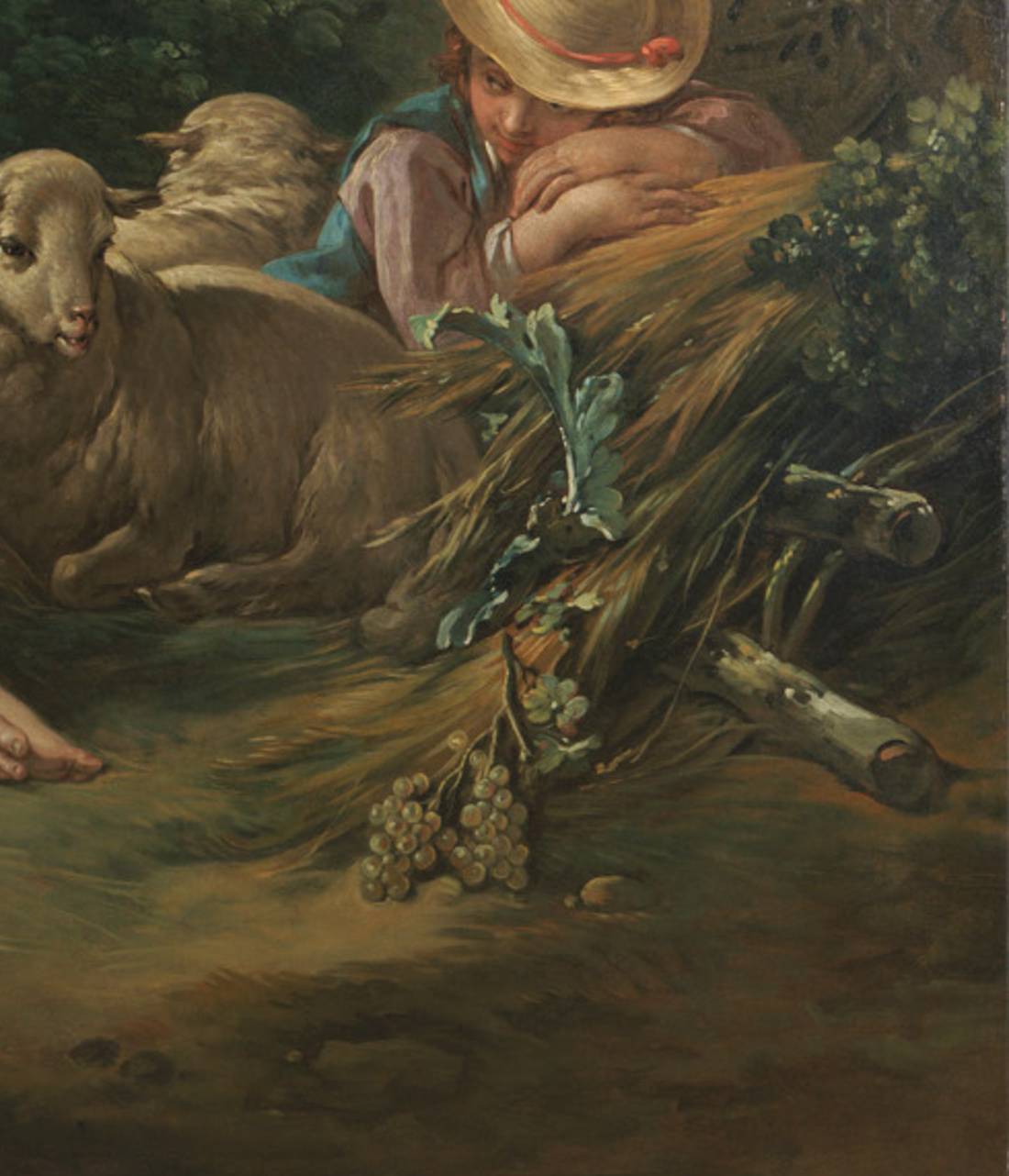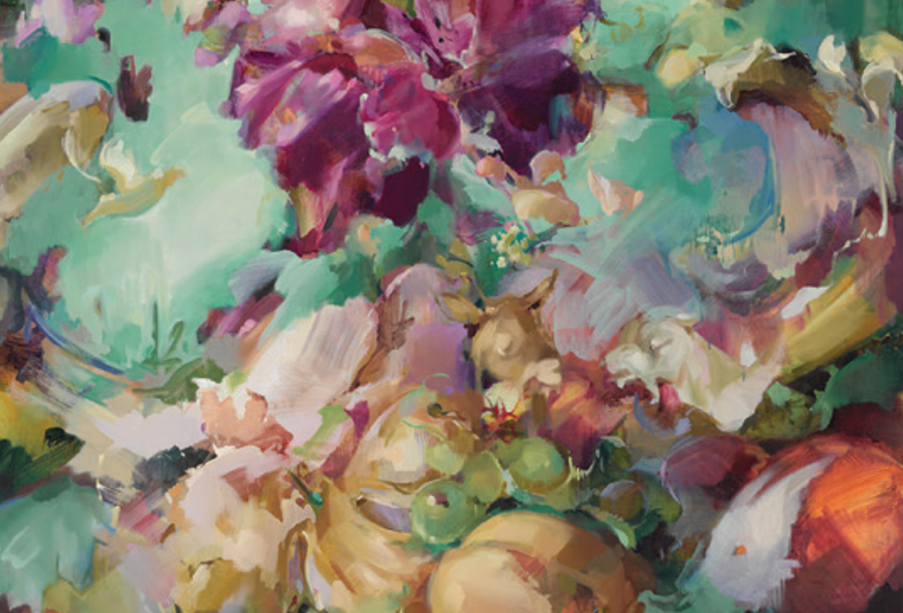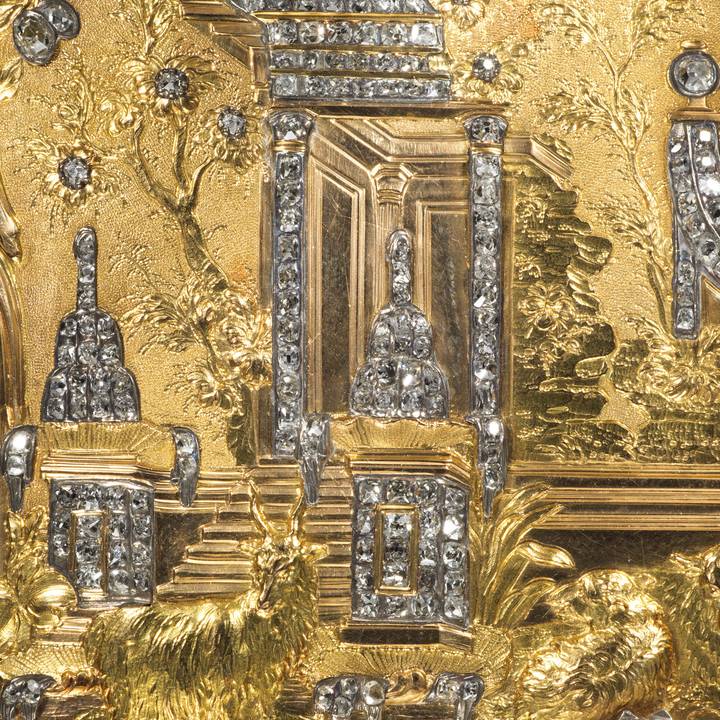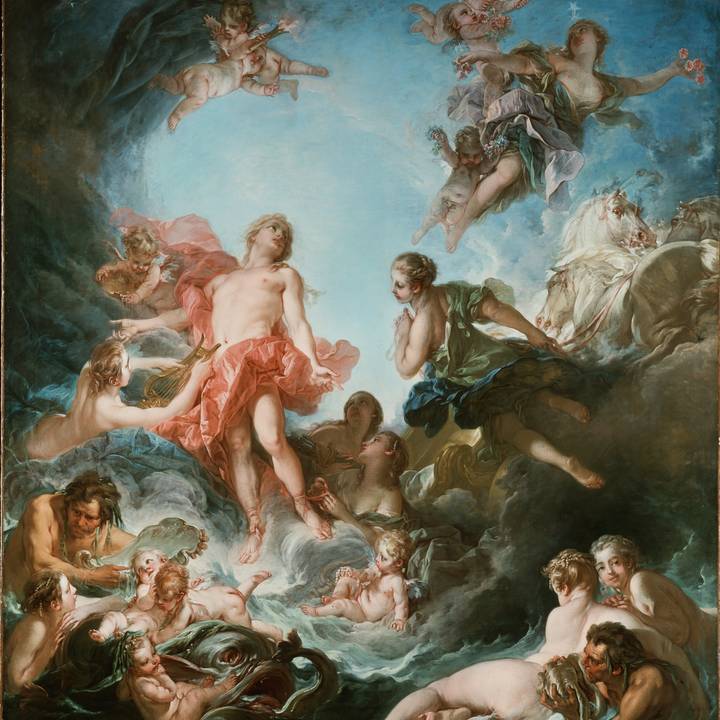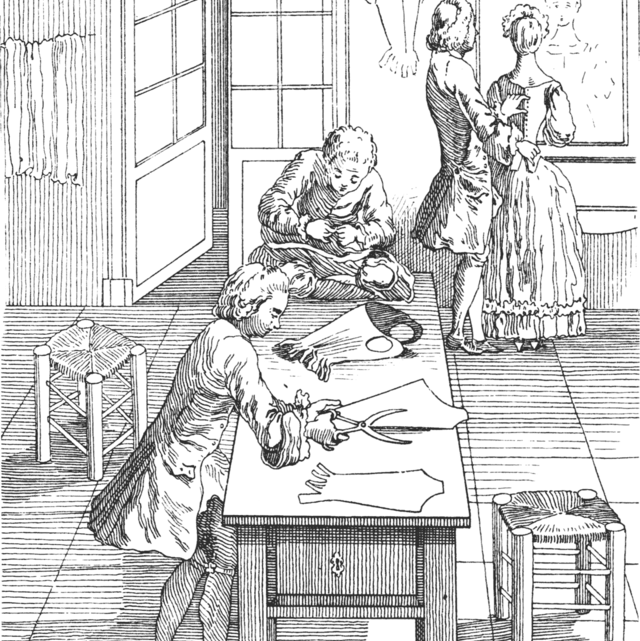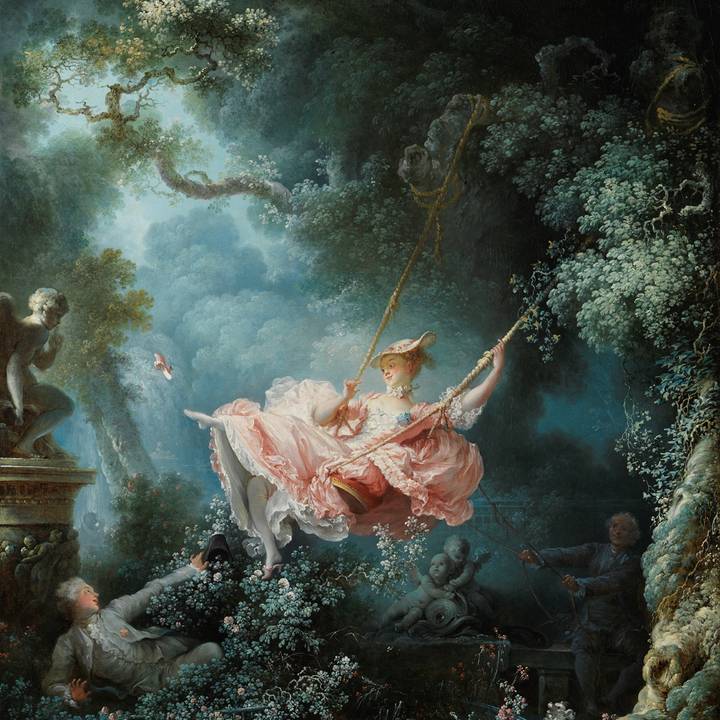One of the key features of Rococo as a design style is the idea of flux – one form appearing to be in the act of morphing into another.
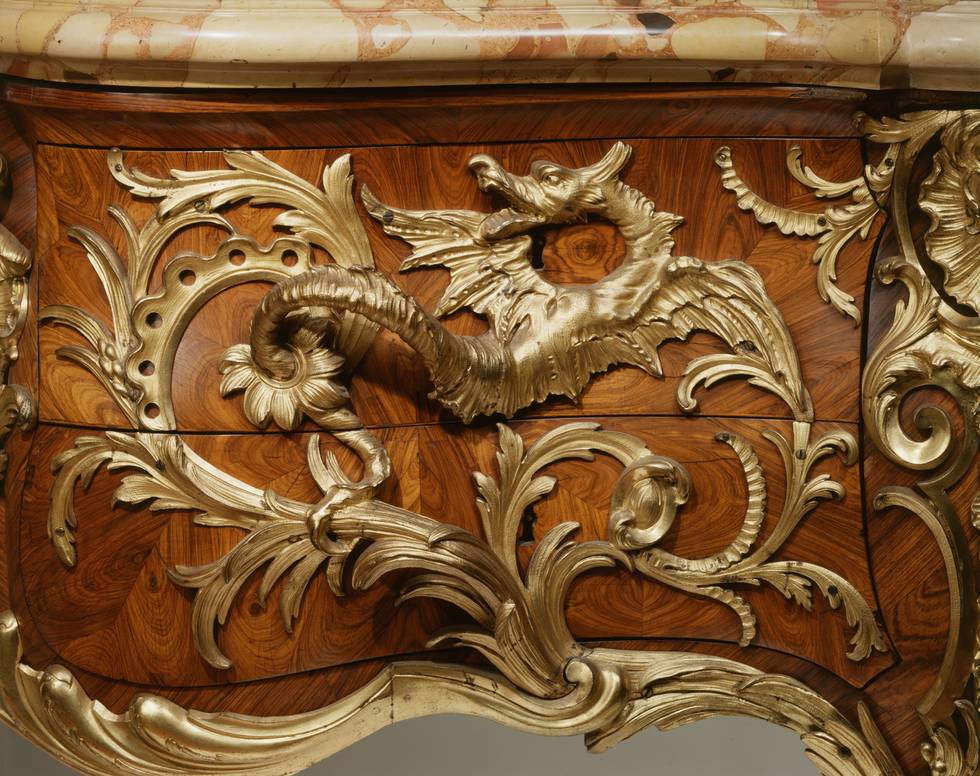
In the Wallace Collection, for example, on a chest of drawers by Antoine Gaudreau (1680–1746), a leaf scrolls round to become a flower through which the tail of a dragon emerges.
That dragon’s body then curves to form a drawer handle while its head and wings conceal a key-hole.
The contemporary British artist Flora Yukhnovich (1990) has found these playful, dynamic and highly imaginative aspects of the Rococo a great inspiration in creating her large-scale, semi-abstract oil paintings.

When Yukhnovich was invited by the Wallace Collection to respond to two of François Boucher’s great Rococo pastoral paintings from 1749, she was intrigued to learn of his relationship to the theatre, and how theatrical storylines, characters and costume design fed back into his work.
This particularly chimed with her own practice of drawing on a vast array of different media, everything from 15th-century panel paintings to contemporary film and adverts, to create her own fantastical worlds.
In a very Rococo way, it’s a fluid and ever-changing process. What Yukhnovich sees as a ‘flattening of the hierarchies’ between fine and decorative art is something she very much appreciates in Boucher’s work.
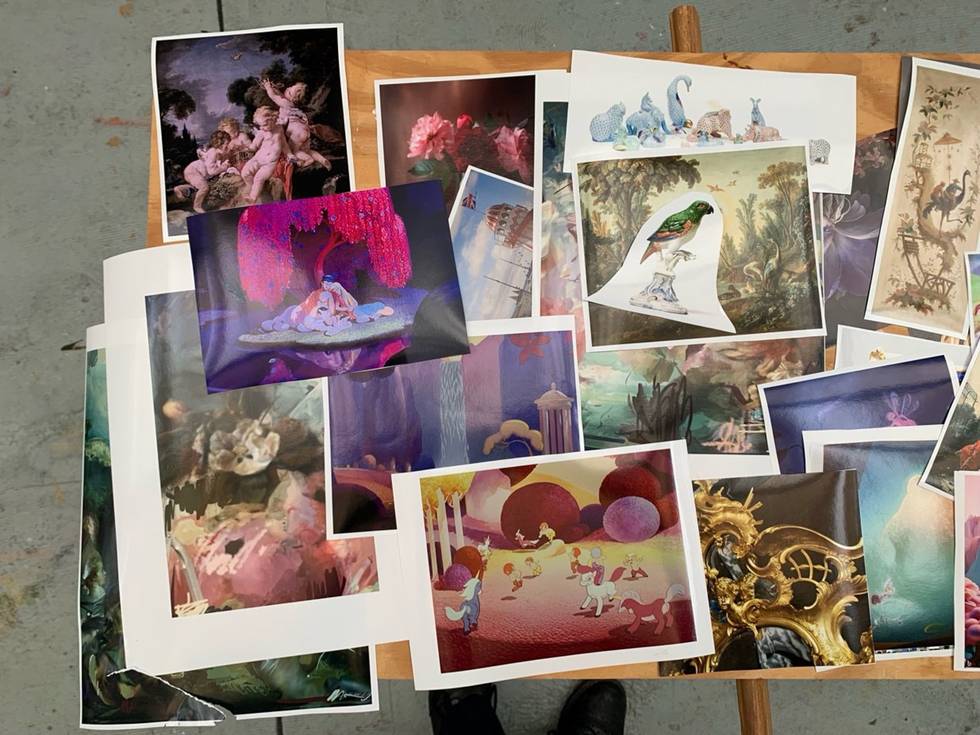
He not only painted but saw his designs reproduced on porcelain, on items like snuff-boxes and on tapestry fabric that might, for instance, be used to upholster chairs. His paintings also responded to the environments in which they would be seen.
Yukhnovich has also talked about her devotion to a medium less commonly used by artists today, and also about her analysis of Boucher’s use of oil paint and colour.
To put this in context, paintings made using coloured pigments bound together with drying oils (for example linseed, walnut or poppy oil) have been discovered dating back to the 7th century CE.
In European art oil paints have been in common use since the early 15th century. As a medium, oil paint has many advantages. The colours are intense, glossy and mostly long-lasting. They can be reworked when wet, blended and layered.
Oil paints when dried also create a remarkably durable surface. Yukhnovich finds the opportunities offered by the medium really compelling.
Rococo Themes
Scroll to see the acanthus leaf designs
The issue of whether the Rococo represents good or bad taste – a matter that still divides opinion – or anything other than saccharine and hedonistic, is also key for Yukhnovich.
Join Dr. Xavier Bray, Director of The Wallace Collection, in conversation with contemporary artist Flora Yukhnovich below as they explore her artistic journey, influences, and her modern reimagining of the Rococo style.
